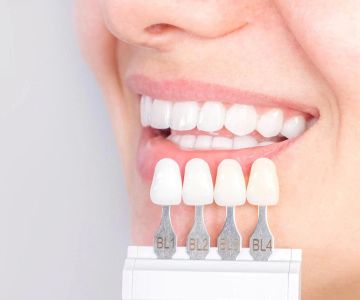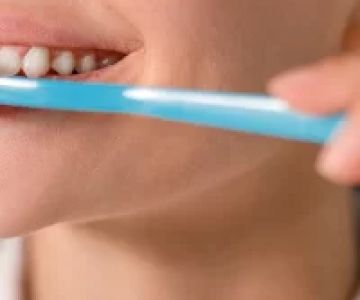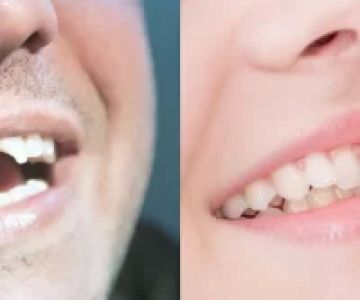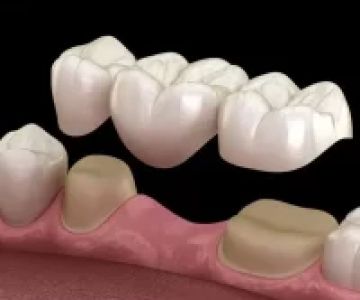
Immediate Solutions for Cracked Dental Restorations: Quick Fixes and Professional Care
- Understanding Cracked Dental Restorations
- How to Handle a Cracked Tooth Filling
- Temporary Solutions for Cracked Crowns
- Professional Dental Repair for Cracked Restorations
- Preventing Future Dental Restoration Damage
1. Understanding Cracked Dental Restorations
A cracked dental restoration, such as a filling, crown, or veneer, can be a stressful situation for any patient. These restorations are designed to restore the function and appearance of damaged teeth, but like natural teeth, they are vulnerable to wear and tear. Cracks can develop due to various factors, such as biting on hard objects, trauma, or even the natural aging process of dental materials.
While a crack in a dental restoration might not always cause immediate pain, it’s important to address it as soon as possible to prevent further damage to the tooth or restoration. In some cases, a cracked restoration can expose the underlying tooth structure, leading to discomfort, sensitivity, or even infection.
2. How to Handle a Cracked Tooth Filling
If you notice that your tooth filling has cracked, it’s important to take immediate action to prevent further damage. Here's what you can do:
- Avoid chewing on the affected tooth: Chewing on a cracked filling can worsen the damage and potentially cause the tooth or filling to break further. Try to chew on the opposite side of your mouth until you see a dentist.
- Keep the area clean: Gently rinse your mouth with warm water to remove any debris. If you experience sensitivity, you can use a desensitizing toothpaste temporarily until your dental visit.
- Use dental wax: If the crack is large enough to cause sharp edges that may irritate your tongue or gums, use orthodontic wax or dental putty to cover the area temporarily until you can visit your dentist.
- Avoid hot or cold foods: A cracked filling can expose sensitive tooth areas, so it's best to avoid consuming foods or drinks that are too hot or cold to prevent discomfort.
Taking these precautions can help protect your tooth and alleviate discomfort until you can get a professional repair.
3. Temporary Solutions for Cracked Crowns
Cracked crowns can be particularly concerning since they cover the entire tooth and are often integral to the overall dental restoration. If you experience a cracked crown, it’s important to manage it until you can see your dentist. Here are some immediate solutions:
- Use temporary dental cement: If the crown has fallen off or is loose, you can use temporary dental cement or over-the-counter dental adhesive to secure it in place temporarily. This will help protect the underlying tooth until professional repair can be made.
- Seal any sharp edges: If the crown is cracked but still in place, use dental wax to smooth any sharp edges that could irritate the inside of your mouth or gums.
- Avoid sticky or hard foods: Until you can get your crown fixed, avoid sticky foods like caramel or chewing on hard items like ice, which can exacerbate the crack or dislodge the crown completely.
These temporary solutions will help prevent further damage and discomfort while you await a professional dental repair.
4. Professional Dental Repair for Cracked Restorations
While immediate solutions can offer temporary relief, professional dental care is essential to properly repair a cracked restoration. Your dentist will evaluate the extent of the damage and determine the best treatment option based on the type and location of the crack.
For cracked fillings, your dentist may remove the old filling and replace it with a new one, often using stronger materials like composite resins or porcelain. For cracked crowns, the dentist may need to replace the crown entirely if it is beyond repair. In some cases, if the crack is superficial, the dentist may be able to smooth and reshape the crown.
Professional treatment will not only restore the function of your tooth but also ensure that the damage is fully addressed to prevent future issues. If a crack exposes the underlying tooth to decay or infection, your dentist may recommend additional procedures such as a root canal.
5. Preventing Future Dental Restoration Damage
After your cracked restoration is repaired, it’s important to take steps to prevent similar damage in the future. Here are a few tips:
- Use a mouthguard: If you participate in contact sports or grind your teeth at night, wearing a mouthguard can protect your restorations and natural teeth from impact and wear.
- Avoid chewing on hard objects: Chewing on ice, hard candies, or non-food objects can put excessive pressure on dental restorations, leading to cracks and fractures.
- Maintain regular dental checkups: Regular visits to the dentist will help identify potential issues with your restorations before they become serious problems.
- Practice good oral hygiene: Keeping your teeth and gums healthy can reduce the risk of needing additional restorations or repairs. Brushing and flossing regularly will help protect both natural teeth and restorations.
By taking these preventive measures, you can prolong the life of your dental restorations and avoid the hassle and expense of further repairs.
If you’re dealing with a cracked dental restoration or need professional repair services, visit Dentistry Toothtruth for expert advice and the best dental products to support your oral health.







 Westgate Dental Arts
Westgate Dental Arts Coventry Family Dental
Coventry Family Dental Familia Dental
Familia Dental Dr. Daniel S. Fife, DDS
Dr. Daniel S. Fife, DDS Dentistry At Suburban Square: Michael I. Wollock, DMD
Dentistry At Suburban Square: Michael I. Wollock, DMD Comfort Care Dental
Comfort Care Dental The Importance of Oral Health Education During Pregnancy for a Healthy Pregnancy
The Importance of Oral Health Education During Pregnancy for a Healthy Pregnancy Why Skipping Dental Checkups Can Lead to Bigger Oral Health Problems
Why Skipping Dental Checkups Can Lead to Bigger Oral Health Problems Advantages of Porcelain Dental Restorations
Advantages of Porcelain Dental Restorations Best Tips for Brushing Your Teeth Properly for Healthy Gums: Essential Techniques for Oral Health
Best Tips for Brushing Your Teeth Properly for Healthy Gums: Essential Techniques for Oral Health How Can Diabetes Cause Tooth and Gum Problems? Preventing and Managing Oral Health Issues
How Can Diabetes Cause Tooth and Gum Problems? Preventing and Managing Oral Health Issues Healthy Habits for Promoting Good Oral Health and Hygiene: Tips for a Healthy Smile
Healthy Habits for Promoting Good Oral Health and Hygiene: Tips for a Healthy Smile